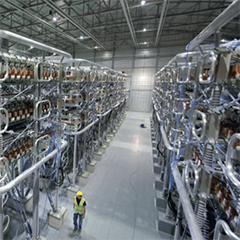Despite Brexit being just around the corner and a number of other trends towards greater nationalism, Europe is growing closer when it comes to its energy supply system. Siemens has just delivered a high-voltage direct current (HVDC) system connecting the power grids of Belgium and the UK. Other interconnectors are already online and many more are in the making to connect the European countries power grids with each other.
One of the objectives of the European Commission is that each member state should be capable of transporting 15 percent of its own electricity production capacity across its borders by 2030. Once all technical and regulatory barriers have been overcome, a fully integrated single Energy market would result in an energy supply system that’s more secure, more affordable, and more climate-friendly.
Interconnectors make cross-border energy trading possible between different countries. Like electricity superhighways, they connect the national transmission systems, and collectively they form an European transmission grid. Siemens is helping drive the development of a fully integrated European energy market forward by making available innovative technologies like HVDC. HVDC interconnectors are able to transport electricity many hundreds of kilometers with very low losses. That makes them way more efficient than alternating current (AC) solutions.
An HVDC connection essentially consists of a converter station where the AC voltage from the source network is converted into DC voltage, a DC power transmission cable, and another converter station at the other end where the DC voltage is converted back to AC.
Very recently, HVDC PLUS technology from Siemens has made an unrestricted flow of electricity between Belgium and the U.K. a reality. Since the beginning of 2019, the 140 kilometer-long NemoLink interconnector will improve the security of supply in both countries, enable the import and export of electricity, and help integrate renewable energy into the grid. NemoLink has a transmission capacity of up to 1,000 megawatts (MW) with a transmission voltage of ±400 kilovolts (kV).



























